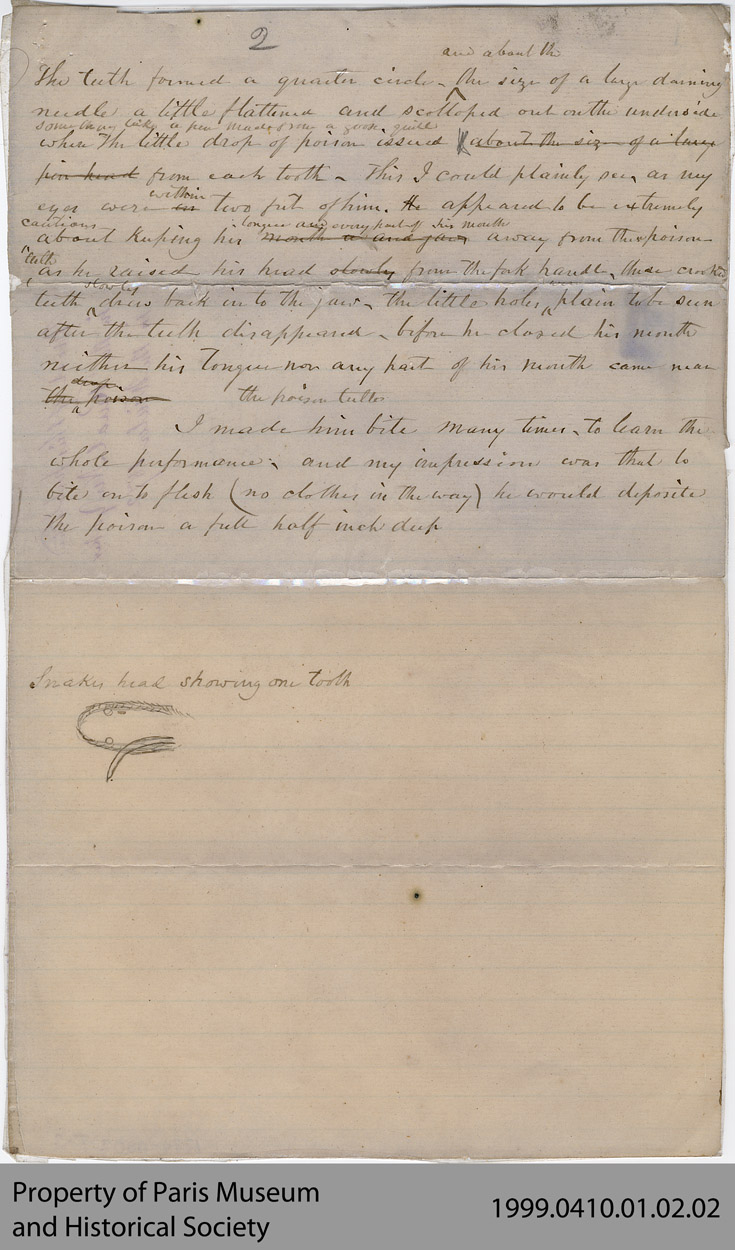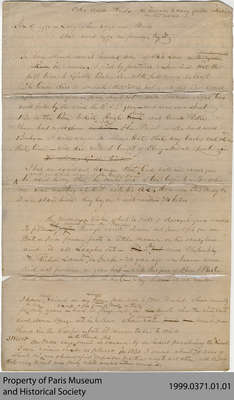
Hiram Capron's Businesses
Farming

Letter from to the Rural New Yorker about rattlesnakes Details
While Capron was a farmer for most of his life, it was his steadiest business and consequently the one about which he wrote the least. It is clear that he had been practicing farming since the earliest days of his career. One of his oldest account ledgers, dating to 1828-31, contains details about his farming activities at the time, and the obituary written at the very end of his life notes that, after buying his farmland upon first arriving in Paris, he “remain[ed] a farmer upon the same ground to the time of his death.”
He grew most of the common crops in Ontario at that time, and raised widely used animals. His early ledgers make references to harvesting crops of corn and wheat, as well as farm animals such as sheep, cattle, pigs, oxen and horses. He worked consistently with these crops and animals throughout his life; his final few farm letters from the 1860s and 1870s talk mainly about these same types of crops and animals.
He grew most of the common crops in Ontario at that time, and raised widely used animals. His early ledgers make references to harvesting crops of corn and wheat, as well as farm animals such as sheep, cattle, pigs, oxen and horses. He worked consistently with these crops and animals throughout his life; his final few farm letters from the 1860s and 1870s talk mainly about these same types of crops and animals.

Hiram Capron's farm advice Details
While Capron’s farming business was quiet, it is evident that he faced it with much thought and ingenuity. He subscribed to farming magazines such as The Rural New Yorker in order to keep up on new developments, and wrote in with information and techniques he had discovered. In one letter, he contributes information on exactly what caused corn smut disease in his crops one year, while in another particularly fascinating letter he describes how he had captured a rattlesnake and experimented with it in order to discover exactly how its venom bites work.
Other personal notes of his are charming relics of their day, which show farmers’ superstitions and tales of the kind which were widely believed at the time. He writes advice on such things as determining the sex of eggs (“Long slim eggs are male; Short round eggs are female”), and curing ‘felon of the eye’ in farm animals (“Loaf sugar and Fresh Butter mixed and put into the ear” (Smith, 32)).
Other personal notes of his are charming relics of their day, which show farmers’ superstitions and tales of the kind which were widely believed at the time. He writes advice on such things as determining the sex of eggs (“Long slim eggs are male; Short round eggs are female”), and curing ‘felon of the eye’ in farm animals (“Loaf sugar and Fresh Butter mixed and put into the ear” (Smith, 32)).
